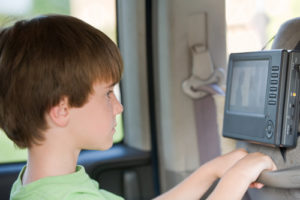Written by Britt Lynn
Kicking back during the summer months is often just what everyone needs after a hectic school year. Shifting gears and focusing on fun and exploration is a great way to keep everyone busy, too. Just because school’s out of session doesn’t mean that learning and education have to take a vacation, though.
Keeping kids’ brains stimulated helps maintain curiosity and a love of learning. Kids’ STEM activities, experiments, and science projects are the perfect way for youngsters to learn and have fun during the summer months. Exploring these projects together as a family is also a great was to connect and have fun.
What does STEM stand for?
“STEM” stands for science, technology, engineering, and mathematics. These four disciplines form the foundation of modern education, and they are part of almost every part of everyone’s daily lives. It’s easy to see how science is everywhere in the world, from astronomy to biology to geology.
Technology is advancing at a fast pace, and keeping up with current technology is mandatory for anyone preparing for entry into the workforce.
Engineering is easily evident in the structures and designs that humans have created, such as roads, buildings, and bridges. Engineering is also involved in inventions that people use every day at work and at home.
A strong foundation in math is crucial for a wide array of occupations, and people typically use math in their everyday lives as well.
Why is STEM so important?
Kids need to have a broad base of knowledge in all four disciplines to succeed in today’s world. Students are challenged and educated in the STEM subjects as a part of school curricula, and it’s also important to keep them curious about these subjects when they’re not in school.
Happily, studying and learning STEM subjects can be exciting and entertaining for kids. In many cases, they can be learning without even realizing it, because they’re having so much fun.
Is STEM easy for a parent to teach their child?
While you may not have a fancy laboratory at home, you might be surprised at how many different science experiments and projects you can perform with simple materials and ingredients you probably already have on hand.
Most kids find slime enthralling, so whip up a batch of colorful slime using school glue, borax, and food coloring. You can teach kids about colors and densities by making a rainbow in a glass. It’s even possible to make a simple but effective rocket with a mixture of yeast and hydrogen peroxide.
Who says English and math have to be boring subjects?
Playing games is an excellent way to practice those math facts or solidify those spelling rules. Math bingo and math hopscotch are tried-and-true games that kids love, and you’ll love that they’re learning while they’re having fun.
Games that focus on nouns, verbs, adverbs, and adjectives can be surprisingly enjoyable, and kids won’t even realize that they’re learning grammar while they play.
Engineering projects are easy, challenging and FUN!
The subject of engineering can be a thrilling topic to cover during summer vacation. Explore shock absorption and acceleration by designing and constructing an egg drop. Building and testing a mousetrap car could be the perfect way to while away those long summer days.
While kids are working on their cars, they’ll be learning about mechanics and kinetics. Don’t forget to have a race after everyone finishes their cars!
Those who are really enjoying the world of engineering might like building a wind turbine that can actually power a light bulb or a carbon filament light bulb that uses pencil graphite. With a skateboard and a cordless drill, kids could make an electric skateboard that actually achieves some impressive speeds.
Engineering projects can be as simple or as challenging as you wish, and many projects are easily adapted to the materials you have around the house.
English
- Ten Classroom Games Every English Teacher Should Know
- Fun Ways to Learn English Spelling and Grammar
- Verb/Adverb Charades
- Five Fun Ways to Teach Grammar
- Finish the Story
- Nouns: Animal Word-o-Rama
- Top Audiobooks for Kids
Science
- Launching Homemade Baking Soda Rockets
- Simple Rocket Science Activity
- Make Slime With Glue and Borax
- Slime Recipe Test: Simple Science for Kids
- Make a Potato Battery to Power an LED Clock
- Water Cycle in a Bag
- How Potato Batteries Work
Math
- Math Bingo
- Math Bingo Game
- Five Fun Math Games to Play in Math Class
- Do the Math Hopscotch Game
- Calculator Hopscotch
- Activity Plan: Moving-Math Hopscotch








